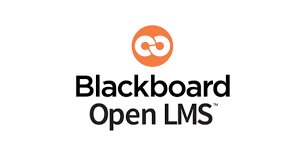Content Strategy
We create the right strategies to help design a Higher Education content
solution to meet your needs
solution to meet your needs
Content Design
We create a blueprint to set out a robust content design plan for the success of your Higher Education institution.
Content Development
Develop content solutions that best meet the desired learning outcomes.
1 Types of Content
2 Content Evaluation and Assessment
| A number of evaluation and assessment methods to help increase student engagement | |
|---|---|
| Questions for self-evaluation exercises | Ready questions to self-evaluation exercises, including referencing. |
| Answers to self-evaluation exercises | Ready answers to self-evaluation exercises, including referencing. |
| Question Bank | A set of questions for the entire module to test the student’s knowledge. |
| Answers to Question Banks | A complete list of answers to the Question Bank. |
| Trial exam – Questions | Trial exam allows your learners to practice customised and specific question types and structures, similar to those in the real exam. |
| Answers to Trial Exams | Complete answer key to all questions included in the trial exam. |
| Role-play Group Exercise | Group activities that include role-play learning experiences. |
| An answer key for Role-play Group Exercises | Complete answer key to all role-play group exercises to evaluate students’ performance. |
| Performance Indicator for Group Exercises | A set of guidelines for the teacher that facilitates assessment and performance measuring. |
| Model Answers for paper assignment/coursework | Essay, coursework or paper assignment sample answers to serve as performance guidelines students will aspire to apply in their individual work |
3 Content for Further Study
| Developing relevant further study resources | |
|---|---|
| Links to more resources | Reference sources that students can use to deepen their understanding of the topic and be able to answer any question. |
| Suggested reading | Recommended reading materials that would help the learner to implement the knowledge in different contexts and scenarios as well as elaborate on the topic further. |
| Recommended organisations | List of companies and organisations that students can visit in order to gain more knowledge about a certain topic and get a deeper understanding of the application of the programme’s content in the working environment. |
4 Quality Assurance
| Content revisions ensuring 100% accuracy and correctness to make your programme professional and consistent | |
|---|---|
| Quality assurance checks | Proofreading and meticulous internal quality checks. |
| Round of Revisions | A rigid Quality Assurance Procedure to seek feedback via Round of Revisions by Faculty Members and SMEs. |
Consultancy
| We want to go beyond our commitment and offer the following customised solutions | |
|---|---|
| Interviews | Creation of enriching content based on interviews with experts from the field. |
| Sourcing of State-of-the-art Material | Shortlisting the most effective learning material that would appeal to your learner group most effectively. |
| Developing Learner Pathways | Developing customised exercise order and type depending on the individual needs and requirements of the learner. |
| Prioritisation Matrix | Prioritising the most important curriculum features for the client based on their Institution’s profile. |
| SME Shortlisting Creative & Innovative Programme Ideas | Determining exercise types and themes that would be most engaging for your students and accelerate their learning process. Linking the lesson content back to students’ personal preferences, interests and strengths. |
| Competitor Benchmarking of Learning Outcomes | Assessment of industry and competitor standards in curriculum development to ensure that your programme covers all most important and sought-after aspects. |
| Tactical Implementation Plan | Tranfering all of your digital content to the online world including onboarding and technical set-up. |
| Requirements Matrix | Listing the most important requirements for the client. |
| Anything additional that the client requests/wishes after the deliverable has been finalised. | Any extra services you want us to assist and help you with, after the ready curriculum is delivered to your Institution. |
Some of the technologies we create content for




